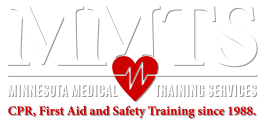Technically speaking, cardiac arrest can happen to anyone. Unfortunately, you won’t see it coming until it’s begun. While there’s no guaranteed way to prevent it from ever happening, you can greatly reduce your risk.
It starts with taking care of your heart.
Whether or not you’re at risk of cardiac arrest due to family history or health issues, everyone can benefit from a healthy heart. Here are some great exercise tips for keeping that heart of yours in shape.
Cardio (Aerobics)
To get your heart into shape, you need to get it pumping. The best way to do that is with some cardio, whether it’s running, jogging, biking, kayaking, or something else.
That said, you don’t want to push yourself too hard. Especially if you’re just starting out. Haven’t exercised in a while? Try just walking. If you have joint problems or feet pain, try swimming.
Weight Training
Weight training does more than give you muscle definition. Like cardio, it gets blood flowing, the heart moving, and burns fat. All of these things help with reducing heart issues. Just like with cardio, take it slow at first.
Hitting the weight too hard on your first day can result in you missing the next few days as you recover.
Start light, and once your body has adjusted, find a workout program put together by a professional to maximize results.
Interval Training
Interval training is actually a technique that can be applied to cardio or weight training. The idea is to mix short, high intensity bursts into longer, low intensity periods. For example, if you’re running, you might jog casually for two minutes, then sprint for 30 seconds, return to your jogging pace for two minutes, and go from there.
Interval training allows you to briefly spike your heart rate before returning it to a lower, safer level. The flux in patterns not only improves heart health, but it can do a great job of burning calories.
Yoga
Though it might seem like a lot of standing still and stretching to the unexperienced, yoga is great exercise, especially for those looking to lower their blood pressure. Because yoga involves lots of deep breathing, it improves blood flow and heart performance.
Not only is it a great workout that can build muscle and leave you sweating, but it’s easy on your body, especially your joints. If you find that jogging, weightlifting, or even excessive walking takes a toll on your body, give yoga a try.
How Much Should I Exercise?
If you’re just starting out, or you’re at high risk of heart trouble, you’ll want to pace yourself. Exercising for 30 minutes a day, 3-5 times a week is a great amount to start making progress. That’s also a small enough time that anyone can fit into their schedules.
Start Now
Don’t delay exercise with excuses. Start today, and you can significantly decrease your risk of heart trouble and cardiac arrest. And to further prepare against cardiac arrest, you can become CPR certified. While you won’t be able to treat yourself, you can respond to someone around you experiencing cardiac arrest.
Visit our public classes page to sign up for CPR certification MN or contact us directly to schedule an onsite class.

